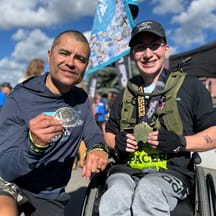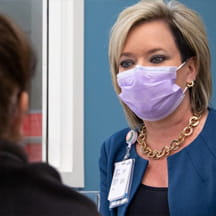"Plan for the worst, expect the best," is something we've all heard before. Children's National Hospital put this into practice to chart their course of action looking into the future of the COVID-19 pandemic.
At the 2020 Annual Leadership Conference, Kathy Gorman, M.S.N., RN, FAAN, chief operating officer at Children's National Hospital in Washington, D.C., and Toomas Truumees, founder and CEO at Adaptive Strategic, partnered to examine the process of understanding patients' needs as COVID-19 evolves. "We need to learn how to see things sooner, act faster and manage potential external problems," Truumees says.
Developing scenarios
Children's National started with possible scenarios they might face as an organization managing care amid the pandemic.
"Scenario planning produces possible outcomes that challenges industry and organizational leaders to think outside of their norms," said Truumees. "We don't need to see things perfectly, but we need to anticipate challenges."
Four scenarios were developed for varying degrees of catastrophe. One example includes the "pediatrics reimagined" scenario, which anticipates wide-scale vaccinations, phased-out social distancing and children back in school. From this, Children's National identified possible strategic responses, such as leveraging decision support tools and flexibility in staffing. "Never has it been more important for leaders in organizations to be incredibly strategic," said Gorman.
Examining preparedness
Using the scenario planning, Children's National reviewed how prepared the organization is for each possible outcome and the probability of it coming true.
For the "pediatrics reimagined" scenario, the hospital anticipates a 15% chance it will come true with a six out of seven rating on the preparedness scale.
"This is also a tool to take a once-a-month pulse," said Truumees. "You'll start to see how you can use it to adjust your course as needed."
It all comes back to the kids
The culmination of this work lies in creating patient personas and mapping the patients' journey through these scenarios.The team created "Sophia" and "James" as potential patients who might need some form of care amid the pandemic. By identifying thoughts, fears and challenges these patients might face throughout their care, the hospital was able to better prepare and improve the patient experience.
"Our care team and scenario planning team walked in these patients' shoes, reviewing what it might be like to make an appointment, arrive to the hospital, receive treatment and follow up," said Gorman.
From these patient journeys, Children's National developed solutions in areas identified as potential problems to best prepare for the road ahead.


